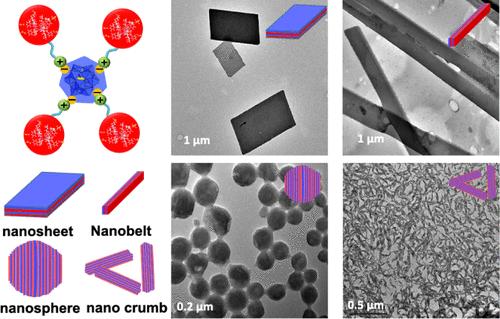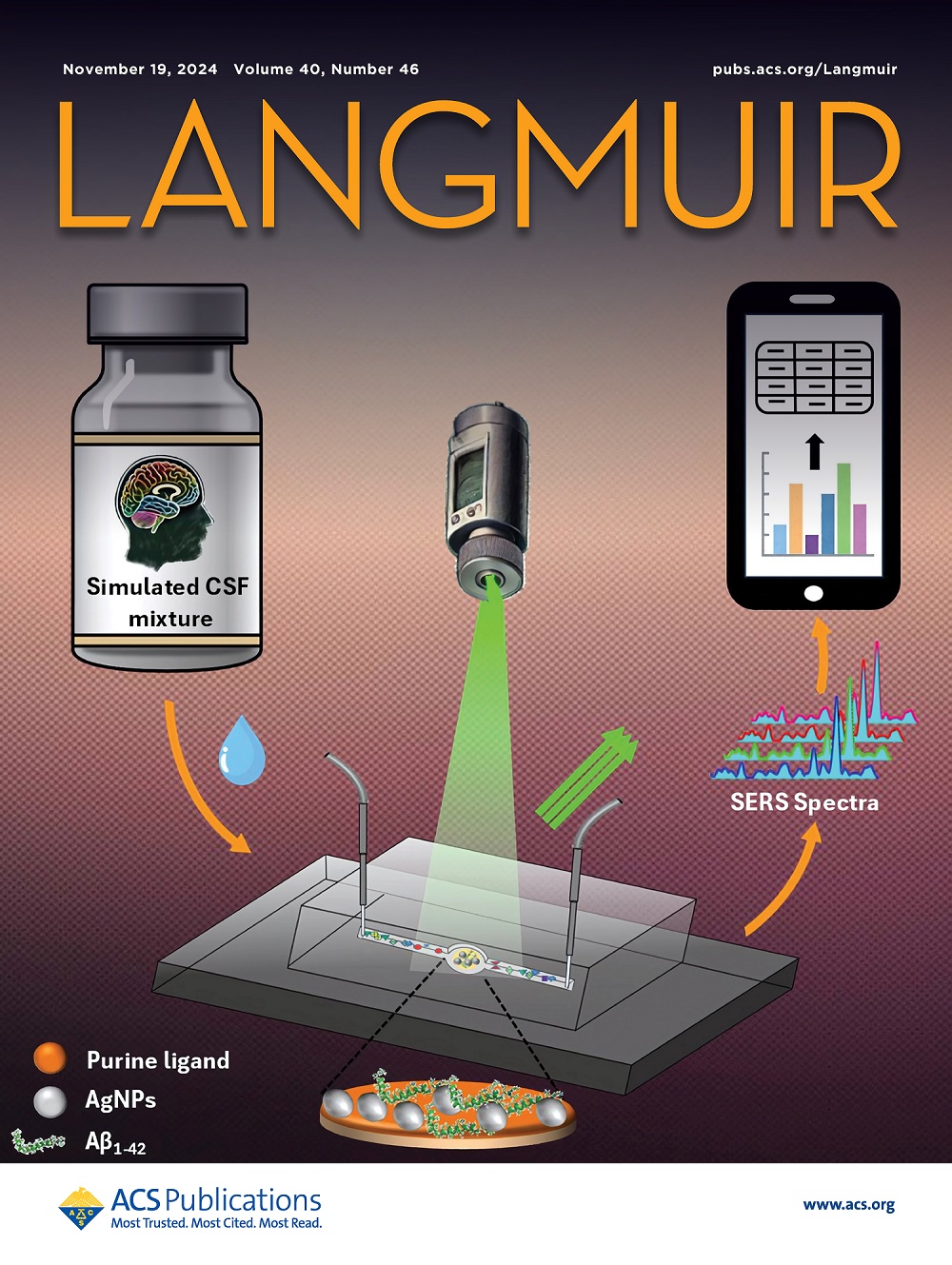Self-assembled Nanostructures of Noncovalent Giant Amphiphilic Molecules Composed of Hydrophobic Isobutyl BPOSS and Hydrophilic POM in Different Cosolvents
IF 3.7
2区 化学
Q2 CHEMISTRY, MULTIDISCIPLINARY
引用次数: 0
Abstract
The self-assembly of giant amphiphilic molecules with diverse topological structures has been widely investigated in bulk, solution, and interfacial environments because it can lead to interesting geometric patterns. However, many giant molecules or their self-assembling units are built by covalent bonds, which may limit the movement of the molecular blocks, affecting the self-assembly process and microstructure. In contrast, the self-assembly of giant units with noncovalent interactions can lead to interesting nanomorphologies and nanostructures. In this study, we built giant amphiphilic molecules (BPOSS&POM) by forming electrostatic interactions between hydrophobic isobutyl polyhedral oligomeric silsesquioxanes (BPOSSs) and hydrophilic polyoxometalates (POMs) to investigate the self-assembly behavior in water/acetone, water/THF, and hexane/acetone cosolvents. By controlling the solvent parameters, BPOSS&POM self-assembled into nanosheet, nanobelt, nanosphere, and nanocrumb structures. The morphology and detailed nanostructure of the different self-assemblies were revealed by performing transmission electron microscopy (TEM), scanning electron microscopy (SEM), and small-angle X-ray scattering (SAXS) measurements. The TEM and SAXS results indicated that the self-assembly microphase exhibited a lamellar structure and an interlayer distance of about 3 nm. The microphase structure of the self-assembly was alternatively organized by layers of BPOSS and POM according to their size and dimension. The polarity of the solvents substantially affected the morphology of the nanoassemblies but not the aggregation behavior of BPOSS and POM. This research offers insights into the preparation of nanomaterials with diverse micromorphologies by simply adjusting the solution components.

求助全文
约1分钟内获得全文
求助全文
来源期刊

Langmuir
化学-材料科学:综合
CiteScore
6.50
自引率
10.30%
发文量
1464
审稿时长
2.1 months
期刊介绍:
Langmuir is an interdisciplinary journal publishing articles in the following subject categories:
Colloids: surfactants and self-assembly, dispersions, emulsions, foams
Interfaces: adsorption, reactions, films, forces
Biological Interfaces: biocolloids, biomolecular and biomimetic materials
Materials: nano- and mesostructured materials, polymers, gels, liquid crystals
Electrochemistry: interfacial charge transfer, charge transport, electrocatalysis, electrokinetic phenomena, bioelectrochemistry
Devices and Applications: sensors, fluidics, patterning, catalysis, photonic crystals
However, when high-impact, original work is submitted that does not fit within the above categories, decisions to accept or decline such papers will be based on one criteria: What Would Irving Do?
Langmuir ranks #2 in citations out of 136 journals in the category of Physical Chemistry with 113,157 total citations. The journal received an Impact Factor of 4.384*.
This journal is also indexed in the categories of Materials Science (ranked #1) and Multidisciplinary Chemistry (ranked #5).
 求助内容:
求助内容: 应助结果提醒方式:
应助结果提醒方式:


